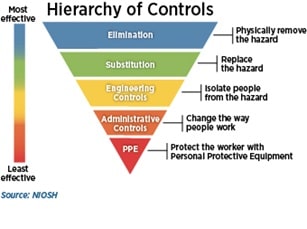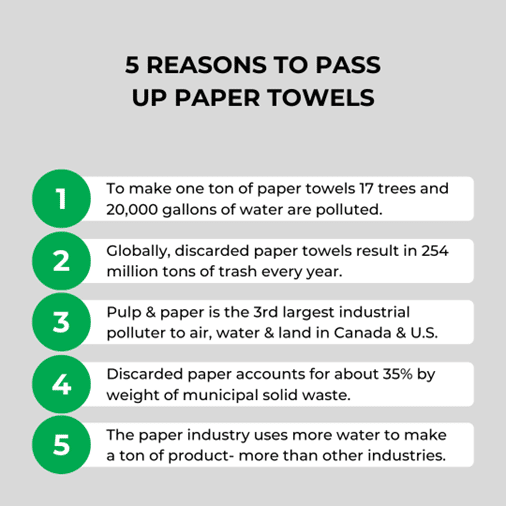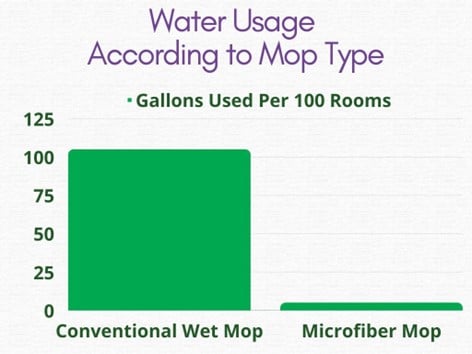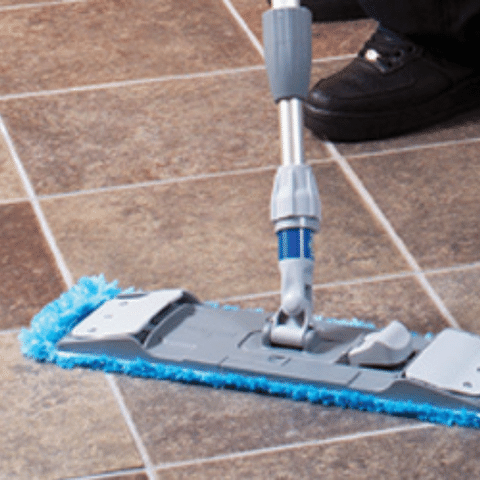While industries across the board consider building social responsibility, eco-friendly products and best practices on sustainability into their business and operational plans, the commercial cleaning industry is no exception. With building service contractors and facility managers evaluating options to lower waste from cleaning and minimize the use of chemicals in the process, commercial cleaning manufacturers must step up their game.
Not only do we need to provide solutions that support sustainability initiatives, but we also must ensure that these solutions don’t jeopardize customer satisfaction when it comes to delivering the highest level of cleanliness possible.
Sustainability vs. Green in Commercial Cleaning
Sustainable cleaning products typically have a higher standard of cleanliness than those simply labeled “green,” as they’re more likely to reduce waste. While green refers to the avoidance of using natural resources during the creation of products, sustainability focuses on reducing the overall impact on the environment, community and economics. Simply put, sustainability focuses on preserving resources to reduce waste, emissions, contamination and pollution.
OSHA’s Role in Controlling Potential Cleaning Hazards
OSHA’s Hierarchy of Controls details the steps necessary to keep your workplace safer. It states that employers should select the controls that are the most feasible, effective and permanent, including controls relating to workplace hazards. To accomplish this, if possible, employers should eliminate the hazards that are likely to cause harm to their staff and replace them with a healthier substitution. Under the Hierarchy of Controls, employers should eliminate unnecessary products and introduce safer products to protect workers.

By following this hierarchy and essentially eliminating as many workplace hazards as possible, such as harsh cleaning chemicals that impact indoor air quality, you are not only satisfying OSHA protocols, but showing your commitment to sustainability.
The Benefits of a Sustainable Facility Cleaning Program
A comprehensive sustainable cleaning program for your facility offers the following advantages:
- Worker safety. Many sustainable products are designed with worker safety top of mind. Incorporating sustainable commercial cleaning products into your program reduces health and safety hazards to your workers, which means less workplace injuries and happier, more productive staff.
- Environmental impact. Sustainable products are made with sustainable manufacturing processes, designed to create less waste throughout the process and from the product itself, decreasing its overall impact from creation to disposal.
- Better indoor air quality. When you’re using environmentally safe cleaners or no chemical solutions at all in your cleaning processes, it improves indoor air quality by minimizing chemical output.
- Typically, more cost effective. Many sustainable products are made to last longer than non-sustainable items. Even though they may have a higher upfront cost, it’s important to consider the cost over the lifespan of the product.
- Corporate or government mandates. Some corporations or government mandates may either require or incentivize the use of sustainable products. For example, there is the Green Jobs Initiative. If companies have a solid plan for training sustainable business practices, they can apply to get federal government grants through the Green Jobs Initiative. These grants are offered to businesses keen on training employees on sustainable business practices.
- Shows commitment to social responsibility. More than a third of global consumers work with businesses that they consider to be environmentally and socially responsible. The study reveals that they are even willing to spend more on sustainable products. Sustainable options demonstrate a strong commitment to these causes.
Sustainable Alternatives to Traditional Commercial Cleaning Products
There’s no question that change can be hard, especially when it involves introducing new cleaning protocols, equipment and employee training. However, there are some innovative cleaning solutions available to help you make the switch to more sustainable alternatives that are easy to use and deploy:
- Paper Towel Alternative
Paper towels are convenient and hassle-free, no doubt! The downside though is that they are disposable and therefore, not the most environmentally sustainable option. The amount of paper wasted when cleaning predominantly with paper towels is neither sustainable nor eco-friendly. Paper towel use can also get expensive over time when you consider that consumers discard over 254 million tons of paper towels each year. In the U.S. alone, over 51,000 trees are cut down to support paper towel consumption daily.

Switching to reusable microfiber cleaning cloths provides a more sustainable cleaning option. Heavy duty, commercial grade microfiber cloths can endure up to 1500 wash cycles and can help lower the risk associated with harmful contaminants thanks to microfiber’s natural ability to attract and hold contaminants without cleaning chemicals.
- Traditional Outdoor Window Cleaning Alternative
Traditional outdoor window cleaning methods generally incorporate a window washing solution to remove dirt, grime and hard water stains. While the solution may do its job, unfortunately the window cleaner and the surrounding environment are both unnecessarily exposed to potentially harsh chemicals. For a more sustainable exterior window cleaning experience, you can adopt a modern approach that uses pure water cleaning technology.
Outdoor window cleaning with pure water utilizes tap water that’s been stripped of its naturally occurring impurities. When the pure water reaches the window, the water immediately wants to try and return to its natural state (one with impurities). To do this, pure water looks for dirt, dust and other particles to which it can adhere. Once the two elements meet, they are bonded together for easy removal during the rinse step of the process. Not only does this leave a spot-free, streak-free surface, but it’s accomplished without any cleaning agent.
- Traditional Indoor Window Cleaning Alternative
When cleaning indoor windows, facilities need to consider the impact on indoor air quality. A more sustainable indoor window cleaning solution minimizes chemical usage and better controls the introduction of airborne chemicals in the environment, all while maintaining an efficient, effective and safe cleaning experience.
Sustainable designed indoor window cleaning tools such as the Unger Stingray use 39% less chemicals than conventional window cleaning methods while allowing you to use the window cleaning solution of your choice. As part of its design, this indoor cleaning tool incorporates an enclosed spray nozzle, limiting any airborne cleaning chemicals.
- Cotton Mop Alternative
Traditional wet mopping with a cotton mophead can be messy, time consuming, and back-breaking work…and for the sustainability conscience, it uses a great deal of water.
As an alternative to the cotton string floor mop, its counterpart, the commercial grade microfiber mophead, uses measurably less water. According to the EPA, conventional Wet Loop Mops use 105 gallons of water per 100 rooms. Microfiber uses only 5 gallons per 100 rooms.

Using less cleaning solution is also important because many professional cleaning products contain chemicals that will eventually make their way down the drain. Conventional wet loop mops use $11.55 of cleaning solution per 100 rooms, while microfiber uses $.50 of cleaning solution per 100 rooms.
The Future of Sustainability and Cleaning
Sustainability doesn’t have to come at the expense of achieving the deepest clean, or the highest level of safety, speed, or profit. If you’re ready to evaluate your cleaning, and see how you can support more sustainable practices, Unger is ready to help. Contact us today to integrate sustainable cleaning tools and equipment into your cleaning operations.

